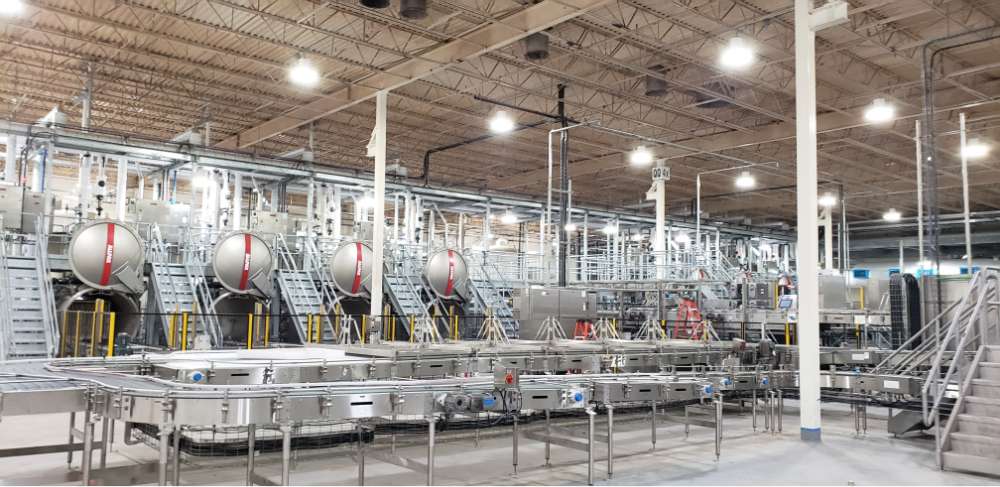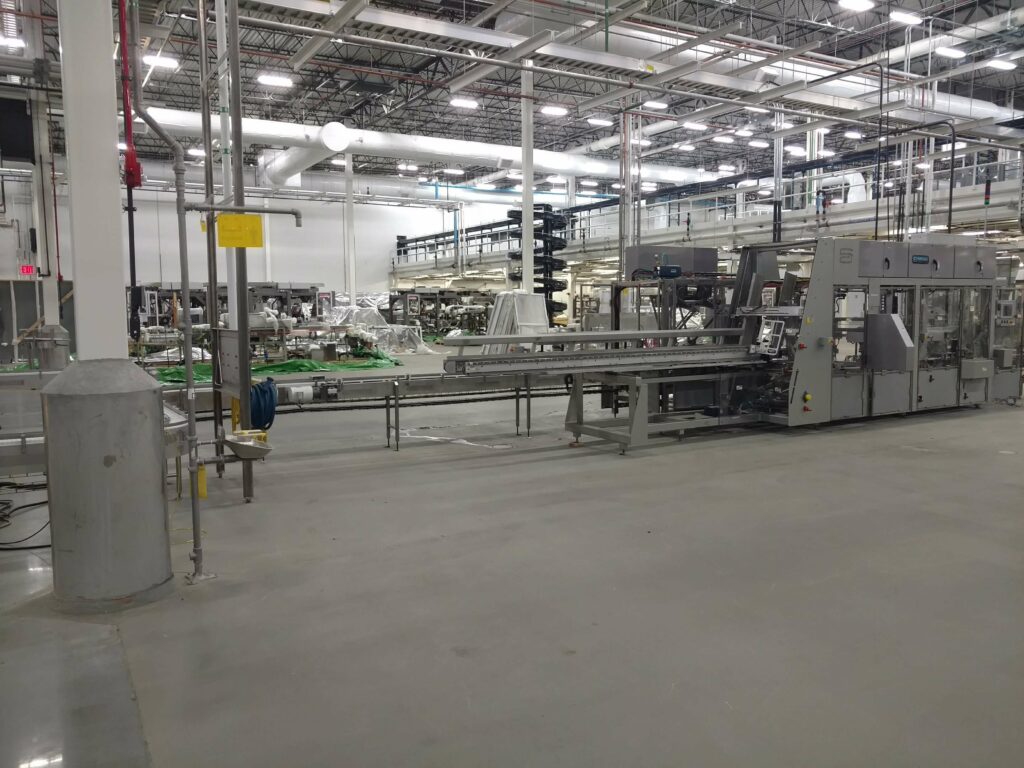
Lean manufacturing is about getting rid of delays and problems that slow down production. By adopting this system, you can make your operations faster, more efficient, and less wasteful. It helps reduce costs and ensures that you deliver high-quality products to your customers on time.
At Process Equipment & Controls (PEC), we can help you implement lean manufacturing principles that will make your production more efficient. Let’s explore what lean manufacturing is and how it can benefit your business.
Understanding Lean Manufacturing
So, what is lean manufacturing? It’s a method that focuses on reducing the time it takes to complete the manufacturing process by getting rid of any wasteful activities. The goal is to make everything run as smoothly as possible, from the moment raw materials enter the factory to when the finished product is delivered.
The idea of lean manufacturing started with the Toyota Production System (TPS) in Japan. Toyota’s managers realized that they needed a new way to improve production speed and quality.
By making their process leaner, they were able to reduce defective products and improve efficiency. This became known as a lean production system and is now used by companies around the world. (Source)
This led to the development of The Toyota Way and a new context for manufacturing success. The Toyota Way would be documented by James P. Womack, Daniel T. Jones, and Daniel Roos in their book The Machine that Changed the World.

Lean manufacturing is built on several important principles. These include focusing on customer value, improving the flow of the production process, and making continuous improvements.
1
The quality of the final product is always an important thing to consider during manufacture, but sometimes it becomes difficult to identify what this quality really means. In the value identification stage, it’s important to consider what the end user really wants to see from the final product. What features are they looking for? Which features do not align with these specific needs?
To distill this down to a very basic example, we can look at a spoon. Users need spoons to eat with, so the product must help them achieve this task. If the spoon has a can opener attachment, this is not helping the user achieve their goal.
Some users may enjoy the extra feature. However, the additional cost and production time will not be worth it in most cases. This is simply because the additional functionality does not serve the needs of the broader customer base.
2
Value stream mapping provides a more in-depth understanding of where this value is coming from. This process involves looking at how the product is designed, how it is used, and how it is disposed of — arranged across a timeline. It’s helpful to refer to software tools and applications to map this value stream.
Once the value stream is mapped, it becomes easier to assess where manufacturing systems can be optimized to provide maximum value to the customer. While the insight is valuable, there is much more to consider before lean manufacturing is achieved on a meaningful level.
3
The flow is essentially the way a product will move through the work environment on its way to completion. From the point at which materials enter the facility, right across the production floor, through to where completed products exit ready for delivery and distribution. There is always the potential for inefficiency. Flow creation is the process of counteracting this and streamlining the journey through the process — important lean Six Sigma principles.
Materials and components at all stages of production need to travel smoothly, efficiently, and logically through the facility. While the layout of the production floor is important to flow, there are other aspects too. Such as an automated solution to transport items from Station A to Station B and so on and highly trained teams of personnel who can monitor production.
4
A pull-based system means the driving force of the manufacturing process is coming from the end user. The end user is essentially “pulling” the goods toward the end of the process by placing orders and creating demand. This is the opposite of a push-based system, in which the driving force comes from the “top”. For example, materials are purchased and products are created, ready for orders that may or may not come in the future.
With a pull-based system, there is no need for a vast inventory, and there is no danger of products going unsold. Instead, the order is placed, demand is created, and then the manufacturing process fulfills this. As long as the value has been properly identified, the demand will come. And as long as the flow has been properly created, the orders will be filled in time.
This is a vital part of lean manufacturing and can be highly beneficial. You will be able to optimize the use of your workspace while reducing wastage in the process.
5
As a core principle, continuous improvement might seem conceptual and difficult to quantify. However, it is an important part of lean manufacturing. Businesses need to keep on monitoring the quality of their products and services, as well as the efficiency of the manufacturing process. This provides the data that teams need to identify the next step in enhancing productivity.
There is no such thing as a perfect product — a kind of eventual endpoint. Instead, you can target an ongoing schedule of continual improvements and developments, both for the product itself and for the system of manufacture.

We have worked with clients from across a range of different industries and sectors. We have found that successfully implementing lean principles within production systems brings with it a wealth of different benefits. Some of which are relatively obvious, while others are perhaps less so.
1
The most immediate benefit of lean principles is time reduction. As the aim of lean is to reduce the time it takes to manufacture a specific product, it makes sense that this would be high on the list. Businesses that adopt this manufacturing concept can achieve a far more streamlined process. They can reduce the time’s production holdups and points of friction that bring operations to a halt.
2
Customer satisfaction is always a key aim when it comes to manufacturing products. After all, it is these customers who generate the demand, and this demand needs to be filled with high-quality output. Delivering great products on time and within a reasonable budget can help to keep your customers happy. It will give you a competitive advantage over other organizations in your field.
3
One of the key tenets of the Six Sigma lean manufacturing tools is to constantly improve processes and output. Product quality is not so much an end target as it is a conceptual driving force. Yes, you can achieve an improved product, but you can always improve still further on this in the future. This is part of the lean manufacturing mindset and will help you develop even better products.
4
If everything is running smoothly and predictably within your manufacturing environment, this means things are going well. And, if things are going well, your teams are likely to be happy, enjoying a high level of workplace morale. This is because points of friction can be seriously frustrating for your personnel. They will see their own hard work undone by things that are not efficient or that are not planned well.
Compromises that are made in order to improve efficiency may lead to lower product quality and workplace safety. Lean manufacturing eliminates these dangers and boosts morale across the organization.
5
Developing pull and feeding demand in this direction, rather than relying on a push-based model, results in better agility for your business. You will become more able to make moves in the market, responding to changing customer demand and taking advantage of the latest trends and expectations.

At PEC, we specialize in innovative, forward-thinking manufacturing solutions. Our team excels in using lean manufacturing processes and autonomous technologies to help transform your operations. Whether it’s optimizing production or streamlining workflows, we work closely with you to create flow throughout your manufacturing environment, ensuring efficiency at every stage.
Our team consists of highly skilled individuals with a diverse range of expertise. By collaborating with you, we can identify the specific needs of your business and implement solutions that improve quality while driving your operation toward peak performance.
Ready to achieve lean enterprise status within your own organization? With Process Equipment & Controls, adopting lean manufacturing principles and Six Sigma tools just got a whole lot easier. Our experienced team can help you utilize lean approaches like a pull system of production that focuses on reducing waste and improving productivity.
If you are still unsure of what lean manufacturing can do for you, we invite you to schedule a consultation today. Our specialized lean enterprise strategy will get your project off the ground in no time!